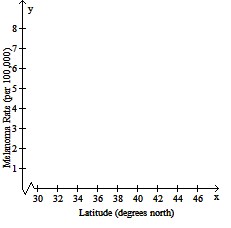Find the derivative of the function.y = 8 cos 10x
A.  = -8 sin 10x
= -8 sin 10x
B.  = -80 sin 10x
= -80 sin 10x
C.  = 80 sin 10x
= 80 sin 10x
D.  = 10 sin 10x
= 10 sin 10x
Answer: B
You might also like to view...
The function f is one-to-one. Find its inverse.f(x) = x3 - 2
A. f-1(x) = 
B. f-1(x) =  - 2
- 2
C. f-1(x) =  + 2
+ 2
D. f-1(x) = 
Solve the problem.For the polynomial function f(x) = 2x4 - 7x3 + 11x - 4a) Find the x- and y-intercepts of the graph of f. Round to two decimal places, if necessary.b) Determine whether the graph crosses or touches the x-axis at each x-intercept.c) End behavior: find the power function that the graph of f resembles for large values of |x|.d) Use a graphing utility to graph the function.Approximate the local maxima rounded to two decimal places, if necessary. Approximate the local minima rounded to two decimal places, if necessary.e) Determine the number of turning points on the graph. f) Put all the information together, and connect the points with a smooth, continuous curve to obtain the graph of f. 
style="vertical-align: 0.0px;" height="200" width="200" /> What will be an ideal response?
Solve the problem.Ultraviolet radiation from the sun is thought to be one factor causing skin cancer. The amount of UV radiation a person receives is a function of the thickness of the earth's ozone layer which depends on the latitude of the area where the person lives. The following data represent the latitudes and melanoma rates for nine randomly selected areas in the United States. The melanoma rates refer to a three-year period.  Graph the data on a scatter diagram treating latitude as the independent variable. Find an equation of the line containing the points
Graph the data on a scatter diagram treating latitude as the independent variable. Find an equation of the line containing the points  -4.0px;" /> and
-4.0px;" /> and  Express the relationship using function notation. Graph the line on the scatter diagram. Interpret the slope of the line. Use the line to predict the melanoma rate of an area with a latitude of 36.1 degrees north.
Express the relationship using function notation. Graph the line on the scatter diagram. Interpret the slope of the line. Use the line to predict the melanoma rate of an area with a latitude of 36.1 degrees north. 
What will be an ideal response?
Evaluate the expression.
A. 0 B. 7 C. 21 D. 1